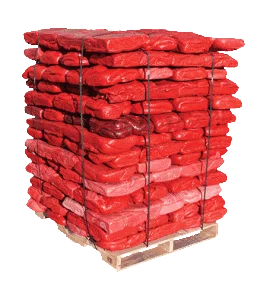Styrofoam is pervasive in our society. It is a great packaging material and insulator because it is very light, durable, moldable into almost any shape, and cheap to produce. “Styrofoam” is a trademarked (Dow Chemical Corporation) thermal insulation made from polystyrene. Expanded PolyStyrene (EPS) is great for packaging almost anything from furniture and TV’s to sensitive electronics.
What isn’t packed in EPS is usually wrapped in Polyethylene, Polypropylene, or Polyurethane. Almost as light as EPS, these plastics are generally extruded to make a snug fit for the materials they are meant to protect. The reason why it is light is that it is 98% air. The problem is the disposal of the EPS after it has completed its’ purpose. The problem is that it is too light to ship back to a recycling mill. To pay for local disposal using a local waste hauler is expensive as well, not because of the weight but the volume. Many companies dispose of the EPS into a 40 yard roll off container that fills quickly and needs to be emptied frequently. Waste haulers charge up to $300 each time the roll off container is picked up. For some companies that means a waste hauling cost of $15,000 or more per year!


The best solution is to reduce the volume by densifying this material. A 53-foot tractor/trailer load of loose foam reduces in volume down to about 4 cubic yards. This same truck can now be loaded with 40,000 lbs of densified product. Since these plastics are recyclable, recycling mills want this product and will pay for it. But the biggest savings come from no longer paying for the waste hauling. The densified products can be stored until a truck load is accumulated and then loaded onto a truck to be shipped to the recycling mill. Not only is this very cost effective, it is environmentally responsible as well. Conservative estimates show that Styrofoam takes more than 500 + years to even begin decomposing. Your coffee cup is going to outlast, you, your children, your children’s children, etc. To put it another way, if Columbus used a Styrofoam cup, it would look pristine sitting in the Smithsonian today.
There are basically two ways to densify these plastics. The “hot” method melts the EPS and other plastics into a brick which is easily stackable and palletized for shipping. The “cold” method uses a horizontal baler to compact the plastics into bricks which again be stacked, palletized and shipped back to the recycling mill. Better Densifiers sells both types of densifiers in various sizes and models. Our friendly staff will help you decide which is better for your operation. Call us at 1-888-350-2079 or contact us online.